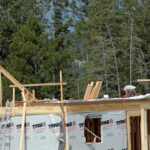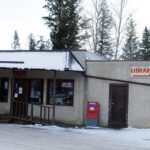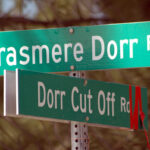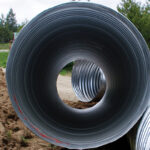Home »

Radon risks outlined to city council
The City of Cranbrook is interested in learning more about the health risks posed by radon gas following a presentation to city council Jan. 6.

Dana Schmidt, founder of the Casltegar-based Donna Schmidt Lung Cancer Prevention Society and Patti King of the Canadian Cancer Society spoke to council Monday night in the hopes of establishing a partnership in community education on radon gas.
According to the Canadian Cancer Society (CCS), “Radon is a colourless, odourless, tasteless radioactive gas found naturally in the environment. It is released into the air during the natural breakdown of uranium in rocks and soil. Once released, radon breaks down into radioactive elements that can attach to dust and other substances in the air we breathe. It’s also a common type of radiation exposure.”

“It’s a health concern because it increases the risks of lung cancer,” King told council, noting lung cancer remains the leading cause of death from cancer in Canada, for both sexes.
Additionally, smokers are more at risk from the dangers of radon, King said.
Some parts of the province have higher radon levels, including Castlegar, with levels changing from home to home and the only way to know about radon levels is to have your home tested, she said.
Schmidt told council he believes his wife, who died from lung cancer in 2009, was exposed to radon.
“I wondered how such a healthy person could catch a disease that killed her in less than three months,” he said. “We are finding out now a lot of people who never smoked are dying from lung cancer.”
He decided to honour his wife by establishing the Donna Schmidt Lung Cancer Prevention Society, with the mission to reduce lung cancer from home and workplace radon exposure.
Included in that work is distribution of radon testing kits free of charge, which Schmidt presented to council members.
He urges all homeowners and business owners to test their buildings for radon, which “comes from the foundation” and needs to be properly vented to reduce build up.

“We’ve had a high rate of success in Castlegar” because of support from city council, Schmidt said, outlining an attempt by Castlegar to have radon venting mandatory in building code requirements but it was nixed by the provincial government because of a desire to keep provincial building codes uniform.
Schmidt and King asked city council for help in spreading the message about radon and described the need for distribution and drop-off locales for test kits.
Council members expressed concern from the messages they heard.
“A bit alarming – some of the information,” said Mayor Wayne Stetski.
Coun. Gerry Warner, pointing out he grew up in Castlegar, with a basement bedroom said, “it’s more than alarming!”
He then asked the delegation why some people seek out locations where they can breath radon for “health benefits,” such as in Montana?
“There is no evidence those things have any health benefits other than as a placebo effect,” Schmidt responded.
Warner held up the test kit provided to him before the meeting and declared, “I am going to use this.”
Schmidt said he isn’t trying to frighten people, rather just make more aware of radon.
“I don’t want anybody to learn about it the way I did – sitting, watching someone die,” he said.
While Castlegar, Clearwater and Barriere are locations with higher concentrations of radon in B.C., the East Kootenay has levels higher than the Lower Mainland, Schmidt said, adding he estimates 15 to 30% of the homes in Cranbrook would “exceed the standard” minimum levels.
King noted that a lot of the schools in the Kootenays have already been “mitigatged for radon.”
Following the presentation, council asked city staff to explore ways Cranbrook could help the delegates, and Mayor Stetski asked them to send a letter to the city outlining exactly what they need.
Lead image from: B.C. Center for Disease Control.
Ian Cobb/e-KNOW







